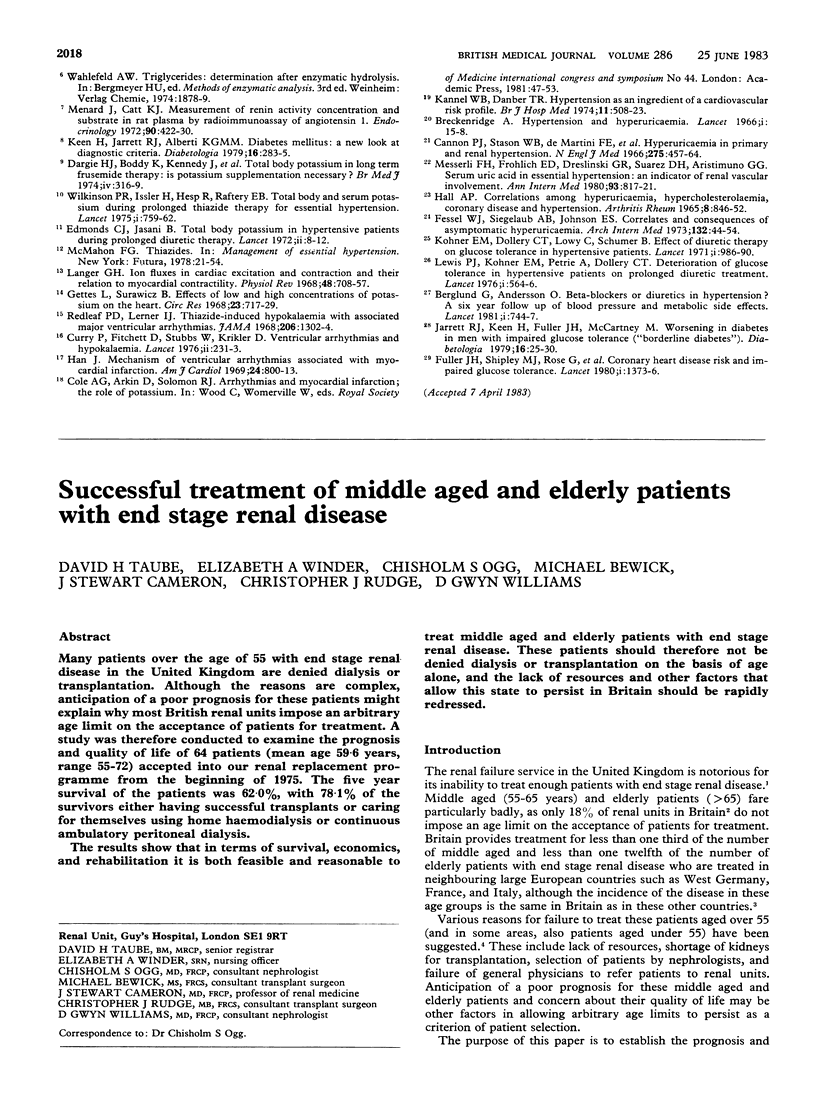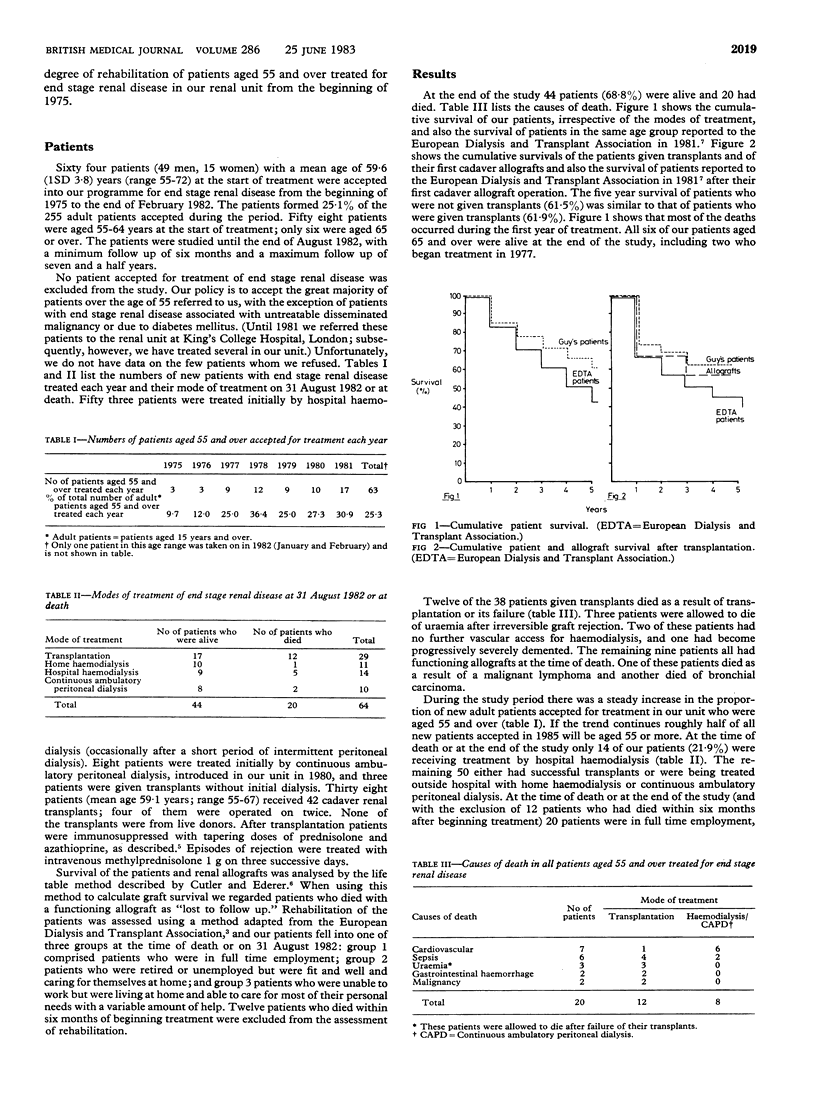Abstract
Many patients over the age of 55 with end stage renal disease in the United Kingdom are denied dialysis or transplantation. Although the reasons are complex, anticipation of a poor prognosis for these patients might explain why most British renal units impose an arbitrary age limit on the acceptance of patients for treatment. A study was therefore conducted to examine the prognosis and quality of life of 84 patients (mean age 59.6 years, range 55-72) accepted into our renal replacement programme from the beginning of 1975. The five year survival of the patients was 62.0% with 78.1% of the survivors either having successful transplants or caring for themselves using home haemodialysis or continuous ambulatory peritoneal dialysis. The results show that in terms of survival, economics, and rehabilitation it is both feasible and reasonable to treat middle aged and elderly patients with end stage renal disease. These patients should therefore not be denied dialysis or transplantation on the basis of age alone, and the lack of resources and other factors that allow this state to persist in Britain should be rapidly redressed.
Full text
PDF


Selected References
These references are in PubMed. This may not be the complete list of references from this article.
- Berlyne G. M. Over 50 and uremic equals death. The failure of the British National Health Service to provide adequate dialysis facilities. Nephron. 1982;31(3):189–190. doi: 10.1159/000182644. [DOI] [PubMed] [Google Scholar]
- Brynger H., Brunner F. P., Chantler C., Donckerwolcke R. A., Jacobs C., Kramer P., Selwood N. H., Wing A. J. Combined report on regular dialysis and transplantation in Europe. X, 1979. Proc Eur Dial Transplant Assoc. 1980;17:2–86. [PubMed] [Google Scholar]
- CUTLER S. J., EDERER F. Maximum utilization of the life table method in analyzing survival. J Chronic Dis. 1958 Dec;8(6):699–712. doi: 10.1016/0021-9681(58)90126-7. [DOI] [PubMed] [Google Scholar]
- Jacobs C., Broyer M., Brunner F. P., Brynger H., Donckerwolcke R. A., Kramer P., Selwood N. H., Wing A. J., Blake P. H. Combined report on regular dialysis and transplantation in Europe, XI, 1980. Proc Eur Dial Transplant Assoc. 1981;18:4–58. [PubMed] [Google Scholar]
- Papadakis J., Brown C. B., Cameron J. S., Adu D., Bewick M., Donaghey R., Ogg C. S., Rudge C., Williams D. G., Taube D. High versus "low" dose corticosteroids in recipients of cadaveric kidneys: prospective controlled trial. Br Med J (Clin Res Ed) 1983 Apr 2;286(6371):1097–1100. doi: 10.1136/bmj.286.6371.1097. [DOI] [PMC free article] [PubMed] [Google Scholar]
- Sommer B. G., Ferguson R. M., Davin T. D., Kjellstrand C. M., Fryd D. S., Simmons R. L., Najarian J. S. Renal transplantation in patients over 50 years of age. Transplant Proc. 1981 Mar;13(1 Pt 1):33–35. [PubMed] [Google Scholar]
- Wing A. J., Brunner F. P., Brynger H., Chantler C., Donckerwolcke R. A., Gurland H. J., Hathway R. A., Jacobs C., Selwood N. H. Combined report on regular dialysis and transplantation in Europe, VIII, 1977. Proc Eur Dial Transplant Assoc. 1978;15:2–76. [PubMed] [Google Scholar]


